Andorra la Vella
Andorra la Vella (UK: /ænˌdɔːrə lə ˈveɪjə/, US: /- lɑː ˈveɪljə/;[2] Catalan pronunciation: [ənˈdorə lə ˈβeʎə], Spanish: Andorra la Vieja, French: Andorre-la-Vieille) is the capital of the Principality of Andorra. It is located high in the east Pyrenees, between France and Spain. It is also the name of the parish that surrounds the capital.
Andorra la Vella | |
|---|---|
 Seal | |
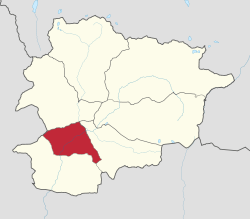 Location within Andorra | |
 Andorra la Vella Location within the Iberian peninsula  Andorra la Vella Location within Europe | |
| Coordinates: 42°30′N 01°30′E | |
| Country | |
| Parishes | Andorra la Vella |
| Villages | La Margineda, Santa Coloma |
| Government | |
| • Cònsol Major | Conxita Marsol |
| Area | |
| • Total | 12 km2 (5 sq mi) |
| Elevation | 1,023 m (3,356 ft) |
| Population (2011) | |
| • Total | 22,256[1] |
| Demonyms | Andorran andorrà, andorrana (ca) |
| Website | Official site |
As of 2015, the city has a population of 22,886, and the urban area, which includes Escaldes-Engordany plus satellite villages, has over 40,000 inhabitants.
The principal industry is tourism, although the country also earns foreign income from being a tax haven. Furniture and brandies are local products. Being at an elevation of 1,023 m (3,356 ft), it is the highest capital city in Europe and a popular ski resort.
Name
Andorra la Vella means "Andorra the Town", to distinguish it from the Principality of Andorra as a whole.[3] Although in Catalan the word vella (like French vieille) is derived from the Latin word vetula which means "old", the Vella here (like French ville and Catalan vila) is derived from the Latin word villa and means "town".[4]
History
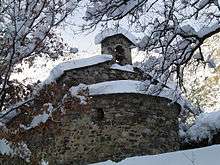
The site of Andorra la Vella has been settled since prior to the Christian era—notably by the Andosin tribe from the late Neolithic. The state is one of the Marca Hispanica created and protected by Charlemagne in the eighth century as a buffer from the Moorish settlers in the Iberian Peninsula.[5]
The settlement of Andorra la Vella has been the principal city of Andorra since 1278 when the French and the Episcopal co-princes agreed to joint suzerainty. Andorra la Vella's old town—the Barri Antic—includes streets and buildings dating from this time. Its most notable building is the Casa de la Vall—constructed in the early sixteenth century—which has been the state's parliamentary house since 1702. Andorra la Vella was, during this period, the capital of a largely isolated and feudal state, which retained its independence due to this principle of co-sovereignty.
Well into the twentieth century, the area around Andorra la Vella remained largely forgotten; indeed the state was not part of the Treaty of Versailles, simply because it was not noticed. After political turmoil in the 1930s and an attempted coup by Boris Skossyreff, an informal democracy developed.
In 1993, the country's first constitution formalised this parliamentary democracy with executive, legislative, and judicial branches located in Andorra la Vella.
During this period, Andorra also developed as a tax haven, resulting in the construction of modern banking offices in Andorra La Vella. The city also developed its skiing facilities, to the extent that Andorra la Vella was Andorra's applicant city for the XXI Olympic Winter Games, the 2010 Winter Olympics. However, Andorra la Vella was not selected by the IOC as a candidate city, following the evaluation report of an IOC commission. It also hosted both the 1991 and 2005 Games of the Small States of Europe.
Geography
Andorra la Vella is located in the south west of Andorra, at 42°30′N 1°30′E,[6] at the confluence of two mountain streams, the Valira del Nord (Northern Valira) and the Valira de l'Orient (Eastern Valira), which join to form the Gran Valira. It adjoins the urban area of Escaldes-Engordany. The city is at 1,023 metres (3,356 ft) above sea level.
Climate
Andorra la Vella has an oceanic climate (Köppen climate classification: Cfb), with warm days and cool nights in summer, and chilly to cold, snowy winters. The average annual precipitation is 812.3 mm (32 in). Temperatures in the city are lowered by the altitude (1,075 metres) compared with lowland areas.
| Climate data for Andorra La Vella (Roc de Sant Pere), elevation: 1,075m (1971–2000, extremes 1934–present) | |||||||||||||
|---|---|---|---|---|---|---|---|---|---|---|---|---|---|
| Month | Jan | Feb | Mar | Apr | May | Jun | Jul | Aug | Sep | Oct | Nov | Dec | Year |
| Record high °C (°F) | 18.0 (64.4) |
20.0 (68.0) |
24.8 (76.6) |
29.0 (84.2) |
29.2 (84.6) |
37.4 (99.3) |
39.0 (102.2) |
35.9 (96.6) |
32.0 (89.6) |
31.0 (87.8) |
21.2 (70.2) |
19.0 (66.2) |
39.0 (102.2) |
| Average high °C (°F) | 6.9 (44.4) |
8.9 (48.0) |
11.7 (53.1) |
13.3 (55.9) |
17.6 (63.7) |
21.9 (71.4) |
26.2 (79.2) |
25.4 (77.7) |
21.4 (70.5) |
16.0 (60.8) |
10.7 (51.3) |
7.5 (45.5) |
15.6 (60.1) |
| Daily mean °C (°F) | 2.2 (36.0) |
3.5 (38.3) |
5.8 (42.4) |
7.5 (45.5) |
11.5 (52.7) |
15.4 (59.7) |
18.8 (65.8) |
18.5 (65.3) |
14.9 (58.8) |
10.3 (50.5) |
5.7 (42.3) |
3.0 (37.4) |
9.8 (49.6) |
| Average low °C (°F) | −2.5 (27.5) |
−1.8 (28.8) |
−0.2 (31.6) |
1.7 (35.1) |
5.3 (41.5) |
8.8 (47.8) |
11.4 (52.5) |
11.4 (52.5) |
8.5 (47.3) |
4.7 (40.5) |
0.6 (33.1) |
−1.4 (29.5) |
3.9 (39.0) |
| Record low °C (°F) | −15 (5) |
−16 (3) |
−11 (12) |
−7 (19) |
−2 (28) |
0.0 (32.0) |
3.0 (37.4) |
2.0 (35.6) |
0.0 (32.0) |
−6 (21) |
−10.5 (13.1) |
−13 (9) |
−19.5 (−3.1) |
| Average precipitation mm (inches) | 53.1 (2.09) |
37.9 (1.49) |
40.5 (1.59) |
71.2 (2.80) |
89.8 (3.54) |
84.2 (3.31) |
60.7 (2.39) |
85.6 (3.37) |
80.9 (3.19) |
72.4 (2.85) |
68.4 (2.69) |
67.9 (2.67) |
812.3 (31.98) |
| Source 1: ACDA[7] | |||||||||||||
| Source 2: Meteo Climat (record highs and lows)[8] | |||||||||||||
Subdivisions
The parish of Andorra la Vella is divided into the villages of Andorra la Vella itself, La Margineda and Santa Coloma.
Landmarks
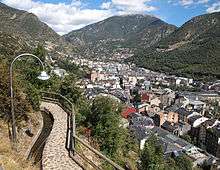
The city's old town is characterized by old stone streets and houses. The central Església de Sant Esteve (Saint Stephen) church is part of the area that guidebooks often label as a picturesque part of the city.[9] This was built in a Romanesque style in the eleventh century. As mentioned earlier, the old town also includes the country's historic parliament building. Probably the oldest building in the city is another church, dating from the ninth century, of Santa Coloma.[10]
Demographics
| Largest groups of foreign residents | |
| Nationality | Population (2013) |
|---|---|
| 6,516 | |
| 3,377 | |
| 664 | |
| 246 | |
| 218 | |
Native Andorrans account for only a third (33%) of the population, with the plurality being Spanish (43%), and notable minorities of Portuguese (11%) and French (7%).
Culture
The city is the country's cultural centre, with the Government Exhibition Hall acting as a main theatre and museum. The piazza outside the parliament building is also the location of a number of events, and the town hosts a music festival every winter.
Languages
Catalan is the official language, although Spanish, Portuguese and French are also spoken. Most of the inhabitants are Roman Catholics, with a high life expectancy of over 80 years.[11]
Notable people
- Marc Forné Molné (born 1946 in Andorra la Vella) was the Prime Minister of Andorra from 1994 to 2005
- Lluís Claret (born 1951 in Andorra la Vella) cellist, especially of chamber music
- Albert Salvadó (born Andorra la Vella 1951) writer and industrial engineer
- Jaume Bartumeu GCIH (born 1954) lawyer and politician, who served as head of government from 2009 to 2011
- Juli Minoves (born 1969 in Andorra la Vella) diplomat, author and the 13th President of Liberal International
- Pere López Agràs (born 1971 in Andorra la Vella) politician who served as an acting Prime Minister in 2011
Sports stars
- Javier Sánchez (born 1968 in Andorra la Vella) is a former professional tennis player, 1986 to 2000
- Sophie Dusautoir Bertrand (born 1972 in Andorra la Vella) ski mountaineer
- Toni Besolí (born 1976 in Andorra la Vella) judoka, who competed in the men's middleweight
- Marc Bernaus (born 1977 in Andorra la Vella) retired footballer who played as a left back.
- Santiago Deu (born 1980) former middle-distance freestyle swimmer, competed 2000 Summer Olympics in Sydney
- Meritxell Sabate (born 1980 in Andorra la Vella) former long-distance freestyle swimmer, competed in the 1996 and 2000 Summer Olympics
- Marta Roure (born 1981 in Andorra la Vella) singer and actress
- Carolina Cerqueda (born 1985 in Andorra la Vella) former sprint freestyle swimmer, competed in the 2004 Summer Olympics
- Marc Garcia (born 1988 in Andorra la Vella), commonly known as Chiqui, is an Andorran footballer
Economy and infrastructure
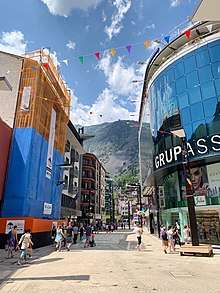
Andorra la Vella is the country's commercial centre. In the country as a whole, 80% of the GDP is derived from the 10 million tourists who visit annually.[12] The city is also the centre for the many banks and businesses that thrive from its tax haven status. The state is not a member of the European Union, but has a customs arrangement with the EU, and uses the euro.
Transportation
Andorra la Vella has direct access to air transportation with commercial helicopter flights from Andorra la Vella Heliport, located in the city centre. Andorra–La Seu d'Urgell Airport is located 24 kilometres (15 miles) south of the city and since July 2015 operates domestic routes to various airports across Spain.[13] Nearby airports located in Spain and France provide access to international flights with the nearest airports being Perpignan (156 km away) and Lleida (160 km away). The largest nearby airports are Toulouse (Tolosa), Girona and Barcelona.[14]
Andorra la Vella does not have a train station, although there are bus shuttle services linking the city to train stations at L'Hospitalet-près-l'Andorre (France) and Lleida in Spain. There are also shuttle buses from Barcelona, Girona and Reus' airports to Andorra la Vella.[15]
Education
The Instituto Español de Andorra (IEA), a Spanish international secondary school, is in La Margineda in Andorra la Vella.[16] The Spanish primary school is Escuela Española de Andorra la Vella.[17]
International relations
Twin towns – sister cities
Andorra la Vella is twinned with the following cities:


Union of Ibero-American Capital Cities
Andorra la Vella is part of the Union of Ibero-American Capital Cities[18] from 12 October 1982 establishing brotherly relations with the following cities:
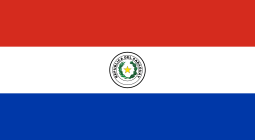



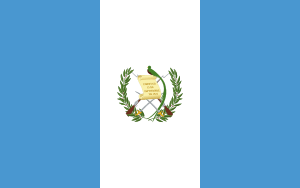

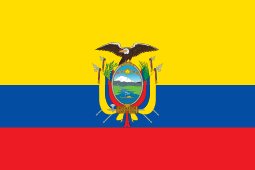




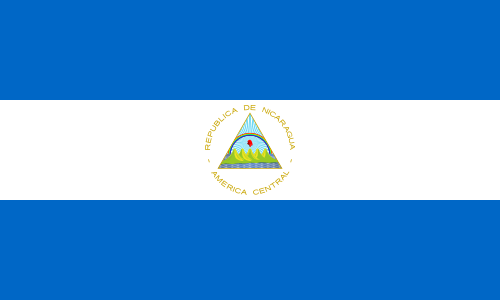


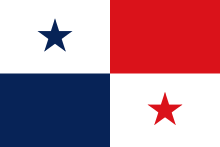

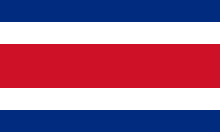

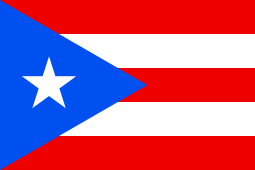
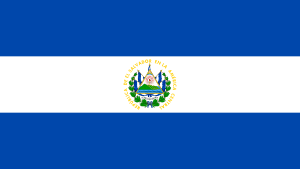


.svg.png)
References
- "Andorra". Archived from the original on 2015-02-16. Retrieved 2015-02-16.
- Roach, Peter (2011). Cambridge English Pronouncing Dictionary (18th ed.). Cambridge: Cambridge University Press. ISBN 978-0-521-15253-2.
- "Andorra la Vella | enciclopèdia.cat". www.enciclopedia.cat (in Catalan). Retrieved 2018-09-23.
"El sobrenom la Vella, és a dir, la vila, li fou afegit posteriorment per tal de distingir la vila del conjunt del territori homònim i potser també per a subratllar-ne la capitalitat" English: "The nickname La Vella, that is, the town, was later added to distinguish the town from the whole of the territory [of Andorra] and perhaps also to emphasize its role as the capital.
- Carrick, Noel (1988). Andorra. Chelsea House Publishers. ISBN 9780791000991.
The word vella has been translated into both English and Spanish as meaning 'old'. In fact, vella is a corruption of the Latin word villa, meaning 'city'. Thus Andorra la Vella merely means 'the city of Andorra'
- "History of the Principality of Andorra". Andorramania.com. 1997-12-11. Retrieved 2010-06-27.
- "NGA: Country Files". Earth-info.nga.mil. Archived from the original on 2012-05-04. Retrieved 2010-06-27.
- "Andorra La Vella 1971-2000 averages". ACDA. Archived from the original on 14 January 2016. Retrieved 3 January 2016.
- "Station Andorra la Vella" (in French). Meteo Climat. Retrieved 14 October 2016.
- "The beautiful Andorra la Vella". Eslteachersboard.com. Retrieved 2010-06-27.
- "Andorra la vella travel guide". World66.com. Archived from the original on 2010-03-05. Retrieved 2010-06-27.
- CIA - The World Factbook - Andorra
- "CruisesOnly - About Cruising - Cruise Advice". Nlgsolutions.com. Retrieved 2010-06-27.
- Swiftair begins operation on July 18 at the airport of Andorra -La Seu flights to Madrid and Palma
- How to get to Andorra by Plane Archived July 24, 2012, at the Wayback Machine
- How to get to Andorra by Bus Archived May 31, 2012, at the Wayback Machine
- "Inicio" Instituto Español de Andorra. Retrieved on May 2, 2015. "DIRECCIÓN: c/ Tossalet i Vinyals, 33-45 La Margineda - AD500 Andorra la Vella Principado de Andorra"
- "Inicio" Escuela Española de Andorra la Vella. Retrieved on May 2, 2015. "C/ CIUTAL DE VALLS, 33 AD500- ANDORRA LA VELLA"
- "Declaración de Hermanamiento múltiple y solidario de todas las Capitales de Iberoamérica (12-10-82)" (PDF). 12 October 1982. Archived from the original (PDF) on 10 May 2013. Retrieved 12 March 2015.
External links
| Wikimedia Commons has media related to Andorra la Vella. |
| Wikivoyage has a travel guide for Andorra La Vella. |